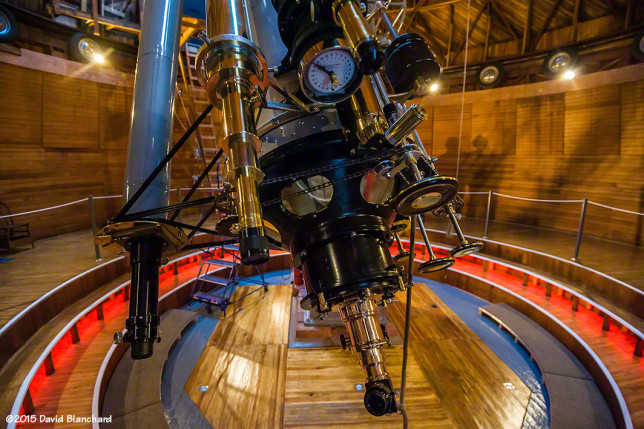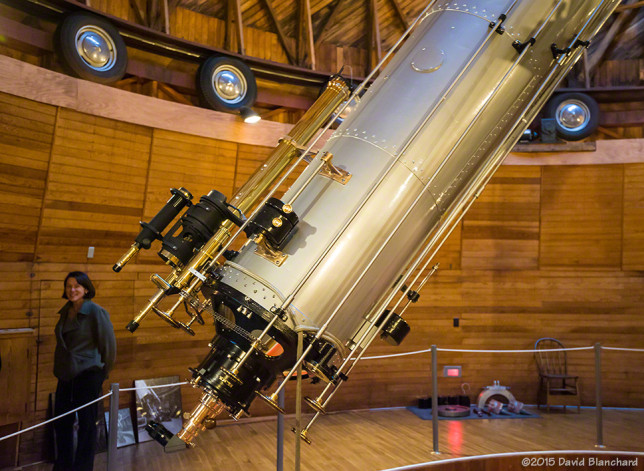Several years ago, Lowell Observatory recognized that the 117-year old Clark Telescope was in need of restoration and began raising money for the necessary work. One of the ways in which they were able to raise the capital was to create a crowdfunding campaign on Indiegogo. It was through this campaign that I made a contribution to the restoration.
Yesterday, May 16, 2015, Lowell Observatory held a Sneak Preview of the restored Clark Telescope for “special donors.” Honestly, I was surprised that my contribution made me a special donor but I gladly accepted the invitation.
The evening program began with a slide show of the dismantling, cleaning, and finally, the reassembly of the telescope. The primary objective lens, not unexpectedly, was quite dirty from over a century of use. This may partly explain why I was unimpressed when I looked through the Clark back in 1999 at the planet Mars. Here’s an excerpt from an email in May 1999:
Yesterday evening I went to the Lowell Observatory since they had an open
telescope viewing night. The local astronomy club was also there with their
telescopes. I got a very nice look at Mars and was able to vaguely see the
northern polar ice cap. Later, I viewed Mars again through their [Clark]
telescope but it wasn’t as nice as through the smaller amateur scope. Oh, well.
The highlight of the evening, of course, was viewing the restored telescope and dome. The telescope itself is not ready for astronomical viewing as the restoration crew continue to finalize their adjustments and alignment. Soon, soon…
Here are a few photographs of the telescope.



Education has replaced research as the primary use of the Clark Telescope with guests enjoying both daytime tours of the telescope and viewing celestial objects in the evening. I’m looking forward to getting another view through the newly restored Clark Telescope.

